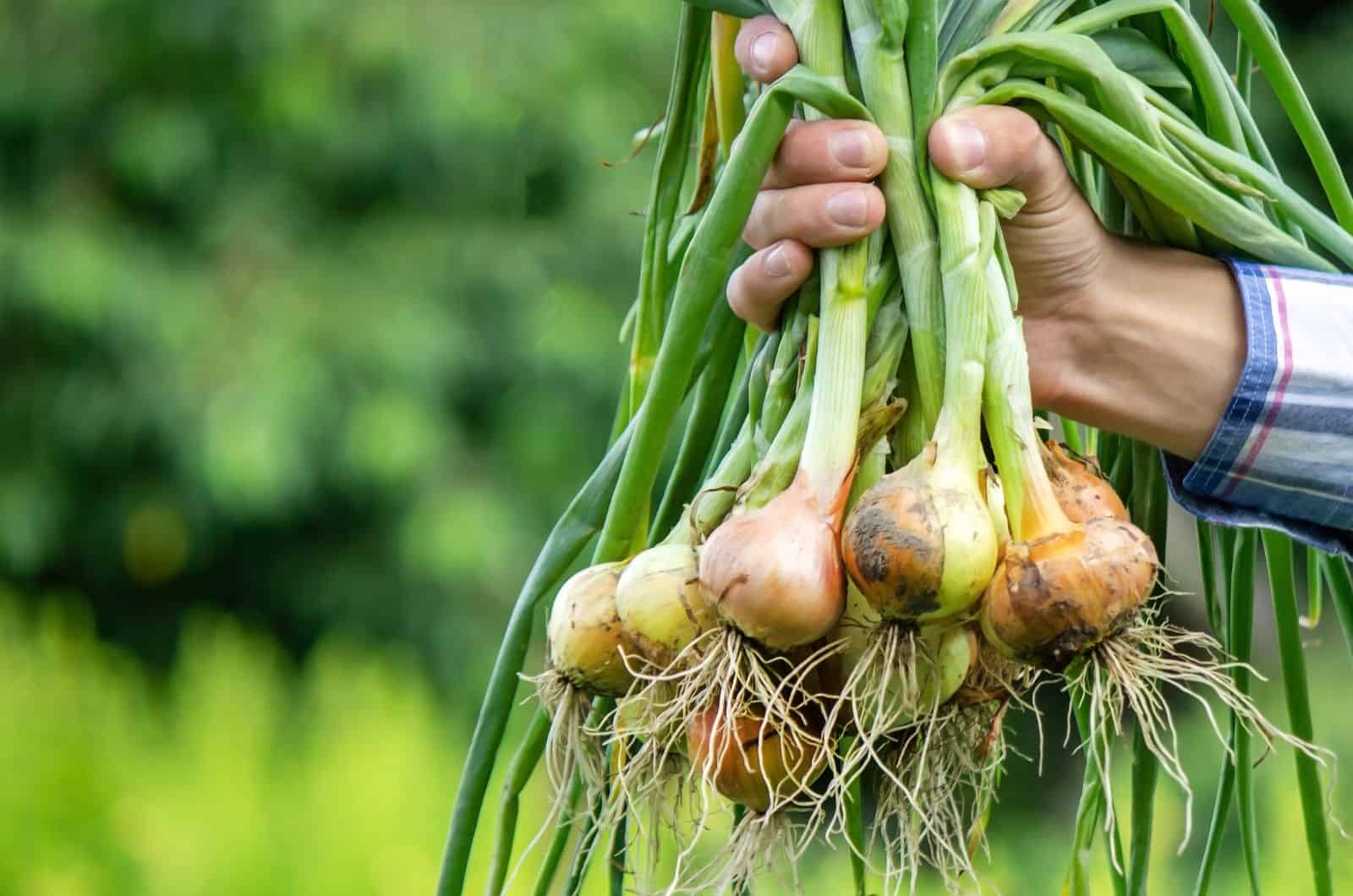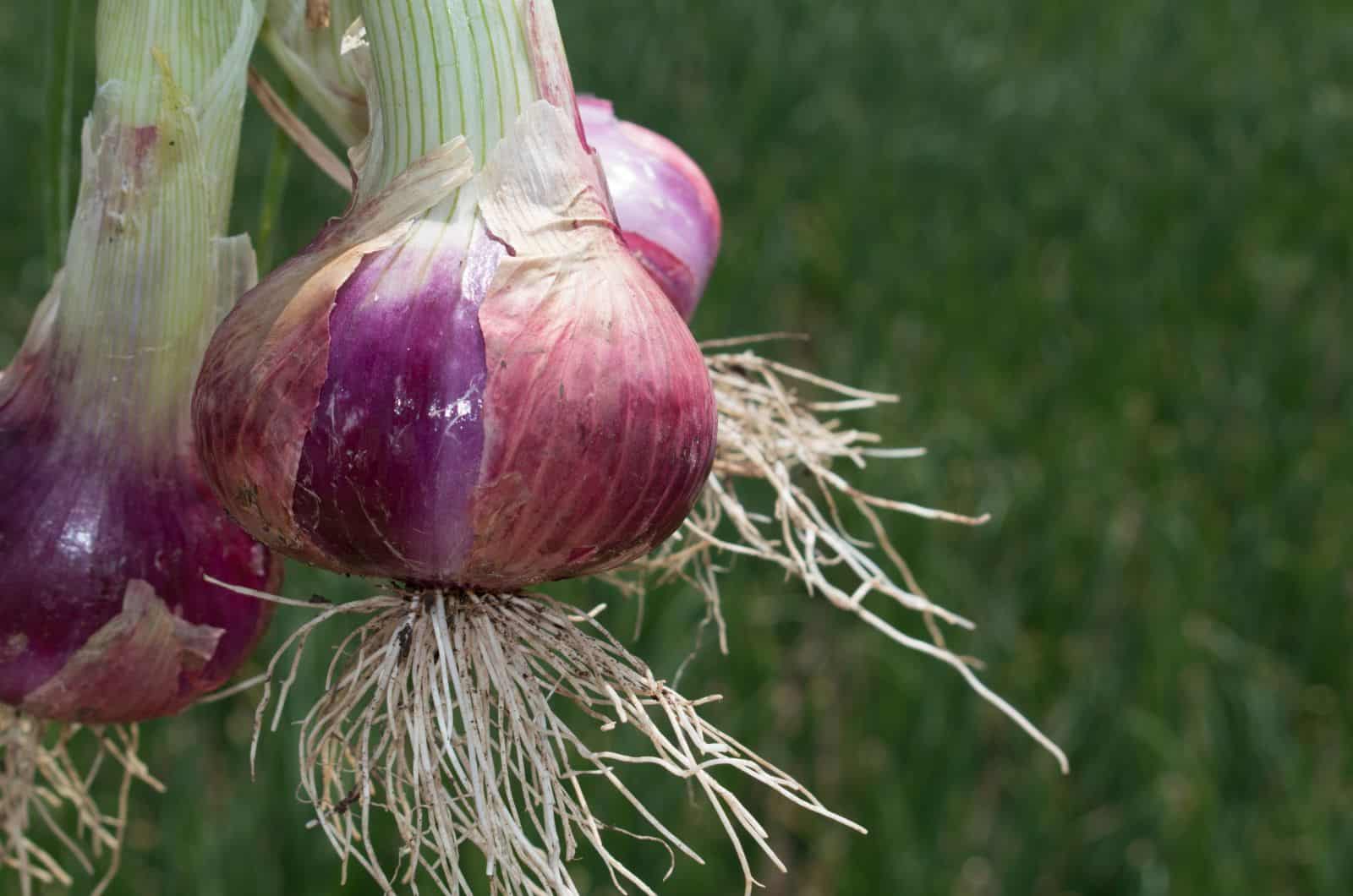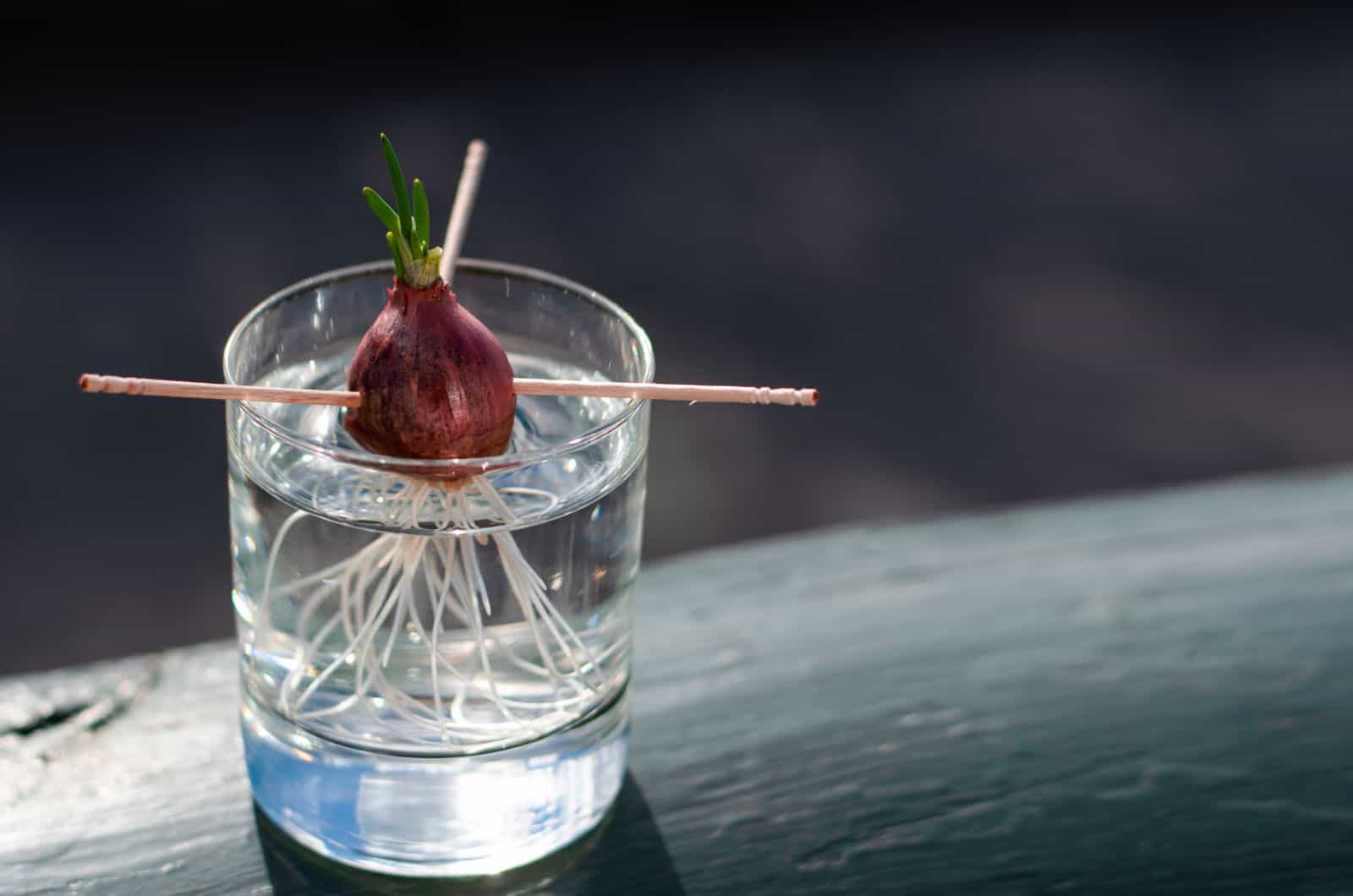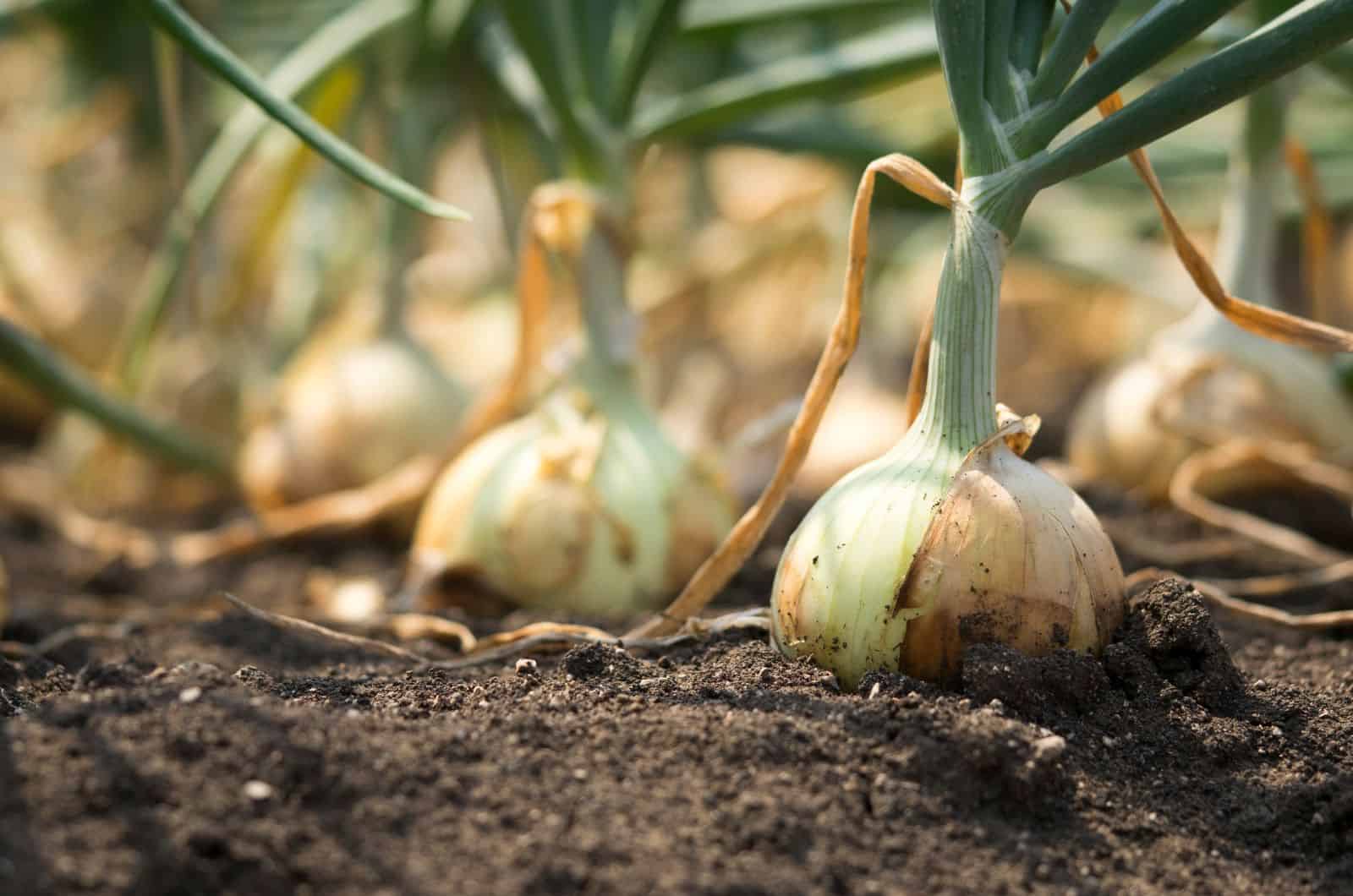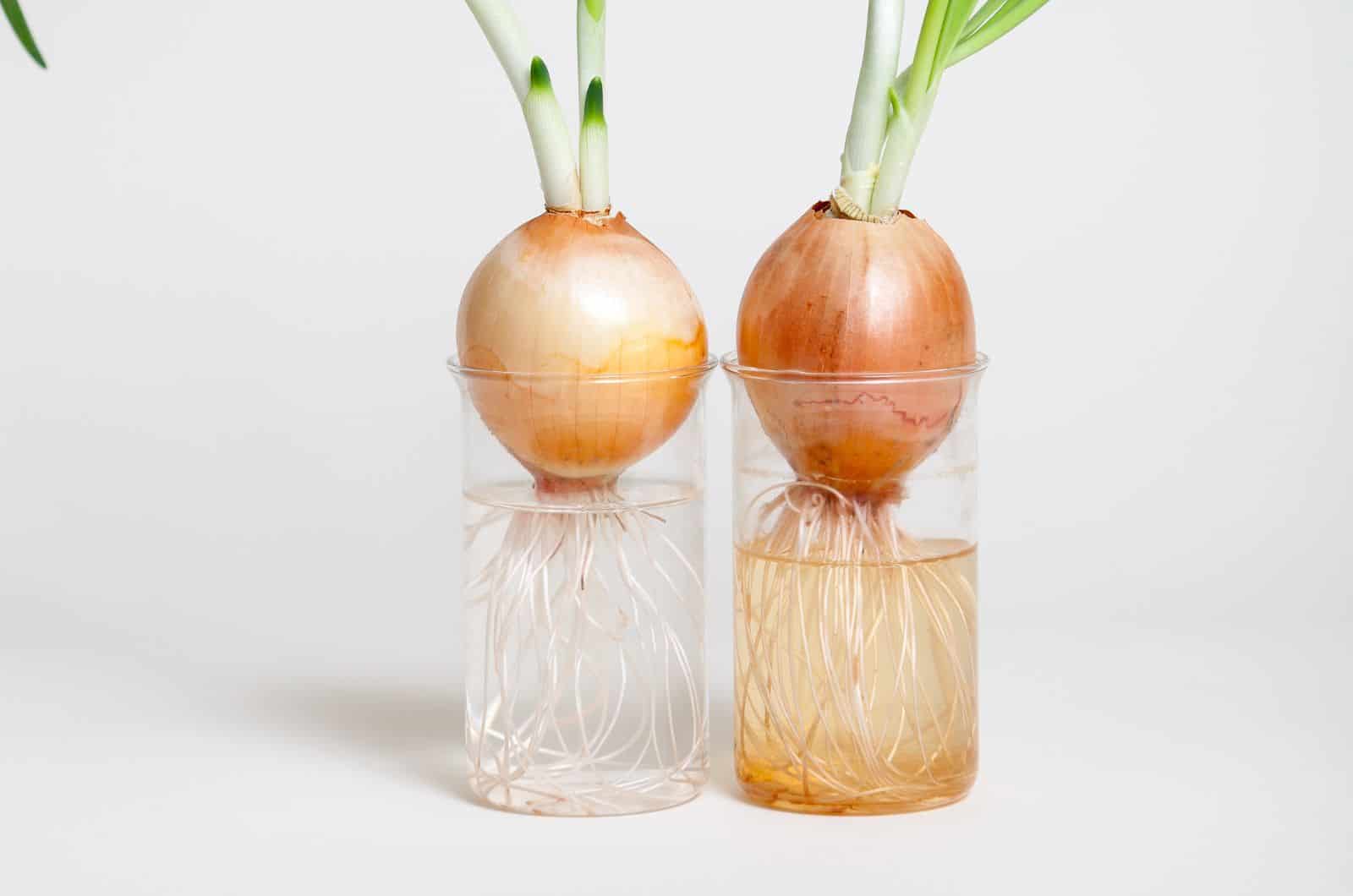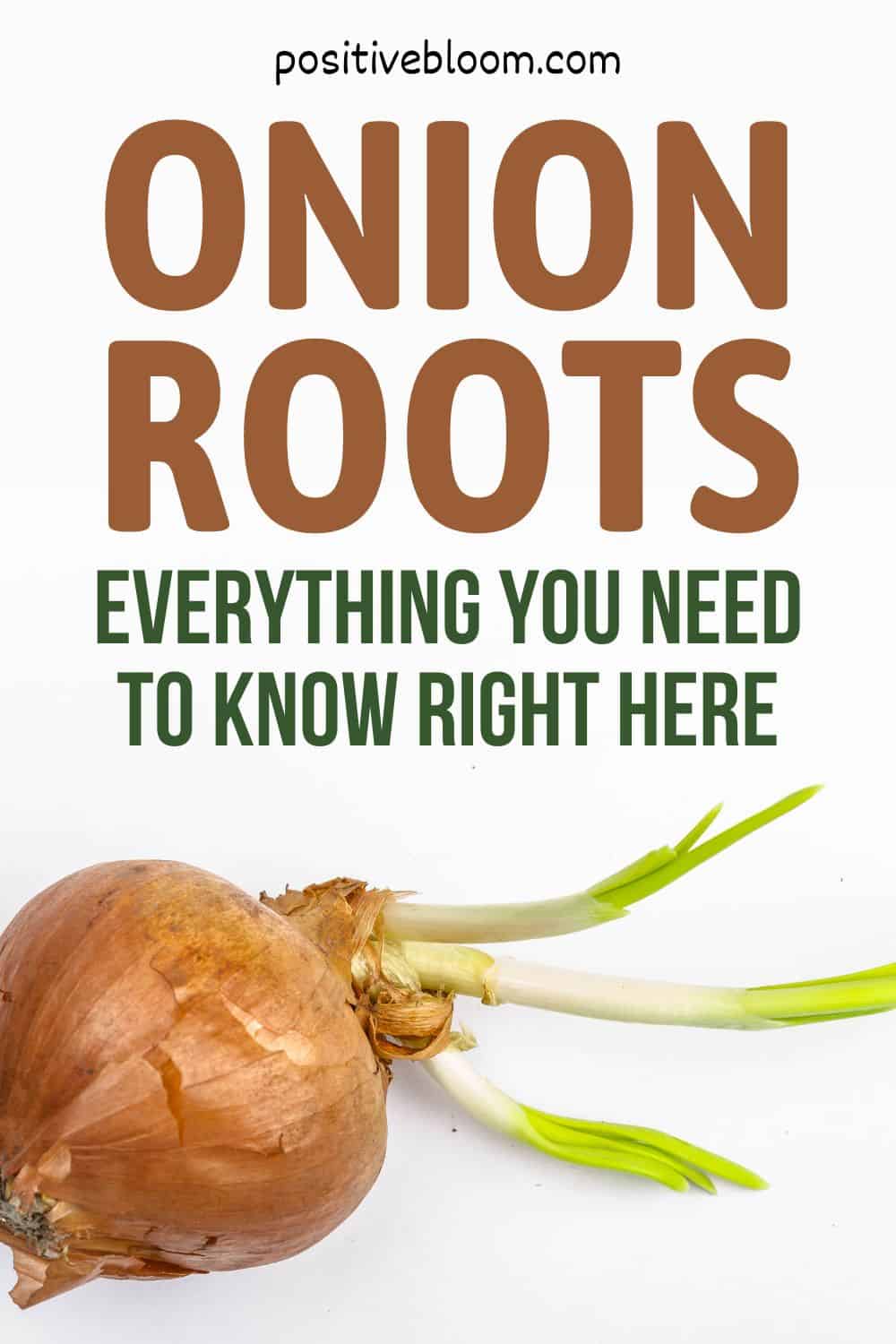When it comes to onions, there are so many amazing options to choose from, whether it’s red onions, yellow onions, leeks, or shallots!
I’m sure you love onions, just like I do, but you might be surprised to hear that onions are used in biological experiments.
More precisely, it’s the onion roots that are used for scientific purposes, and we’ll talk more about that later. We’ll first discuss some general info about these roots, and how they are used in medicine and cuisine.
You’ll also learn the growth stages of onion roots, how deep they grow, and loads more related information.
Let’s get started!
What Are Onion Roots?
What are onion roots? Many people are unaware of the excellent nutritional value of onions. They are actually one of the best veggies to eat because they contain a substance known as Allicin, which has been shown to be useful in treating chronic illnesses like arthritis.
Additionally, these vegetables also possess strong anti-inflammatory qualities.
You will frequently find the roots of onions in many world cuisines.
For example, the flavor of chicken stock is enhanced by the addition of onion roots in Thai cuisine.
They are also the primary component in many other recipes, including curries. The root is a component of several sweets made in India. You can even make a flavorful soup using onion roots!
Onion Roots: Development
The majority of the roots in an onion’s short, scarcely branching root system, are located in the upper parts of the soil.
The rooting density gradually decreases as it goes deeper into the soil.
The control of highly immobile nutrients is significantly impacted by the thin, shallow roots.
These nutrients refer to, for example, phosphorus (P) and potassium (K). However, it may also refer to micronutrients like zinc (Zn).
As a result, onions are more vulnerable to nutritional shortages than the majority of crops, so you need to apply fertilizers such as 10 20 10 to ensure your onions have enough nutrients at the start of their growth cycle.
This will aid in the development of a strong root system, and make it easier for the roots to absorb nitrogen. Nitrogen is essential for the growth and development of the top and bulb.
Shallow root systems are a crucial factor in the effective control of transportable nutrients like nitrates and sulfates.
The problem is that overwatering can cause the mobile nutrients to disappear, so it’s recommended that you give your onions an inch of water each week.
How Deep Do Onion Roots Grow?
There are 10 onion growth stages in the first year of development.
The roots start to develop about three weeks after transplantation. Each onion plant develops 10 to 12 thin, whitish, and sparsely branched roots at this stage. These roots are typically 4 inches wide, and the deepest point is about 12 inches.
About two months after planting, onion plants are half-grown. They have approximately 30 roots that reach depths of up to 27 inches, and are usually 20 inches in diameter.
A mature bulb has up to 25 roots, the majority of which run outward at different angles before turning downward.
It’s worth noting that as the onion ages, the older roots perish.
Factors That Determine Onion Root Growth
As you provide your onions with food and water, the roots will spread outward. The growth rate is influenced by a few variables, but these are frequently negligible. Two of the most important factors are light level and temperature.
For instance, onion plants may turn yellow and die prematurely if temperatures are too high.
Green onions or scallions make perfect greenhouse vegetables as it’s easier to control light levels and provide partial shade in them.
You must also pay attention to irrigation. Onions love moist soil, so you’ll need to provide them with enough water. Not too much though, because if the roots sit in water, they’ll most likely rot.
It takes a lot of time for the onion plant to develop mature, sizable, usable bulbs. Because of this, onions are referred to as a bulb crop.
Onions are a biennial plant, so it will take about two years for these veggies to develop mature bulbs.
How To Grow Onions
If you want to add onions to your vegetable garden, I’ll show you a couple of methods for doing so.
The first includes onion growing from seeds, onion sets, or mature onions.
Let’s get into details!
Planting The Onion Seeds
The best way to grow Allium cepa plants is by planting their seeds. It is an inexpensive and straightforward method.
Place the seeds in a small planter filled with damp soil. As soon as you notice sprouts emerging from the seeds, ensure that you keep the soil moist.
If you are starting onions indoors, pay attention to when you take them outdoors because lower soil temperatures affect the growth. The best time for doing so would be about three weeks after the last frost.
You could also take your onions outside once the temperatures rise to about 60-65 degrees Fahrenheit.
Onions are shallow-rooted plants, which means you won’t need much soil.
Planting Onion Sets
Another way of starting onions is by using the onion bulbs. It’s a simple method, especially if we take into consideration that there’s no need to start the plant indoors and then transplant it outdoors.
The essential thing when using onion bulbs is that the bulbs aren’t too large, or the onion may develop a stiff neck.
The ideal bulb would be about 0.7 inches in diameter.
Planting From A Mature Onion
Most of us dispose of the bottom part of the onion after eating it, but you can actually utilize it to cultivate fresh sprouts. These sprouts can either be eaten as green onions or transplanted into the ground.
You can plant onions in spring or fall. If planting in spring, do it at the end of May or the beginning of June.
If planting in fall, you can start at the end of August or the beginning of September while the weather is still warm enough.
They typically go dormant during the winter months, but they get back on track as soon as spring approaches.
How To Regrow The Roots In Water
If you have children, I highly recommend including them in the process I’m about to show you. If you leave an onion in a cabinet and forget about it, it may eventually sprout once you finally find it (unless it’s rotten).
These roots can be regrown in water, and they can be grown indoors as houseplants until they set seeds. It’s an excellent way to use kitchen scraps to get fresh onions.
Simply put, green onions are onions you pick before they are fully mature.
The green section can be repeatedly regrown in water, or roots can be grown and planted to allow the bulb to mature.
How To Regrow Green Onions
The first procedure I’ll show you is for regrowing spring onions. Here is a step-by-step guide:
• First, you’ll need to cut the old roots near the bulbs. You can use a pair of scissors to remove all green parts, and keep only a tiny bulb.
• Put the root ends in a transparent jar and make sure the water covers only the roots. Please remember that the water should be changed every two days.
• You must now find a perfect spot for your onion. Find a place near a window so they can receive a lot of filtered sunlight all day long.
• You’ll notice new roots in a couple of days, and can expect a new green stem to start growing.
Wait until the roots reach at least one inch in length, and then transplant them in well-draining potting soil. The green stem can then be cut back as necessary when you need onions.
How To Regrow Mature Onions
Here’s a step-by-step guide on regrowing mature onions:
• If your Allium cepa already has roots, cut them back to the bulb. Pay attention not to touch the papery skin. The circular bulb end will serve as a place from which the roots will grow, whereas the tip will serve for crop production.
• Prepare four toothpicks, and put them around the bulb. Make sure there is equal distance between each toothpick. Insert 1/3 of each toothpick into the onion’s side.
• Hang the onion over the container, and remember that the toothpicks should keep the onion in the central section of the jar.
• Now, remove the onion and pour water into the container. The roots and the lower third of the bulb should be submerged in water. Put the onion back over the container again.
• You should again find a perfect place for the container so the onion can receive enough filtered sunlight.
New roots will sprout in a few days, and once they are about an inch long, plant your onion in well-draining potting soil.
Scientific Uses
Why do researchers use onion roots when they want to study the cell cycle and mitosis?
Onion roots can provide scientists with information about the environment in which their plants are growing.
Although onion roots may seem disgusting and unattractive to you, they are crucial for scientists because they can be used to measure how quickly plants are developing.
If you have the roots and a microscope, you can learn more about them.
Onions are used by scientists for a variety of tasks, including research on the cell cycle and mitosis.
This aids researchers in understanding how to ensure that cells divide properly and prevent them from multiplying too quickly. Onions are also used in scientific research to examine how plants develop and take up water.
Mitosis happens in a couple of stages, including prophase, metaphase, anaphase, and telophase.
Onion Roots And Plasma Membranes
Let’s look at a little bit of the science behind onion roots. First, they are covered in cells referred to as epidermal cells. Why are these important?
Well, all the food we consume is produced by organelles, and the organelles are positioned inside the epidermal cells. The organelles are shielded by the plasma membrane, which also divides the cell from its surroundings.
But, cell walls prevent light from penetrating the inside of the epidermal cell, which makes it challenging to observe the plasma membrane under a microscope. This only applies to root vegetables.
Atomic force microscopy enables us to visualize the plasma membranes in the roots of onion plants. This fascinating tool utilizes small quantities of atoms to examine the sample’s surface.
Of course, the sample needs to be meticulously prepared as it’s very sensitive. The process is long, but the thing is that our comprehension of plant biology has been completely changed by this new methodology, and I mean in a good way.
FAQs
Do onion roots need oxygen?
Yes, they do need oxygen. So, the question is, why can you root them in water when they can’t withstand waterlogged soil? The disparity is typically brought about by variations in oxygen supply.
All plant cells require oxygen, but because the cells diffuse it throughout the plant, oxygen is taken in through pores in the leaves and will only benefit neighboring cells.
The roots located in the soil take in oxygen from the air spaces in the soil. Therefore, if there’s too much water in the soil, the air won’t diffuse fast enough.
Bacteria, fungi, and nematodes compete for oxygen, and when only small quantities of oxygen remain, the roots will most likely rot.
When you grow onions in water, there aren’t too many bacteria or fungi, especially if you change the water frequently.
Do onion roots have a taproot?
The taproot develops from the plant’s embryonic component, known as a radicle, whereas the fibrous roots develop from the stalk and leaves. Onion roots are numerous and have a limited life cycle, which is actually the feature of fibrous roots.
What is the purpose of onion roots?
Onion root tips provide the ideal and most appropriate raw material for research into the various stages of mitosis.
Wrapping Up
There are so many benefits of onion growing! They are low-maintenance, don’t require much space, and their green leaves look adorable, not to mention the flavor that makes every dish better!
As well as their unique flavor, onions are also used for medical purposes as they have anti-inflammatory properties.
Finally, onion roots are also used for experiments, which makes them one of the most fascinating and versatile veggies ever!
So, plant the onions, ensure the best conditions for growth, harvest them, store them in a dry place, and enjoy!
Until next time!
Like this post? Share or pin it for later!

